Great Design Plant: Southern Magnolia, Iconic U.S. Native
http://decor-ideas.org 09/20/2014 20:14 Decor Ideas
Southern Magnolia (Magnolia grandiflora) has an old-world charm, with its large, dark, glossy green leaves reminiscent of the tropics. Like the southern live oak, southern magnolia is a large iconic tree native to the U.S. South.
A southeastern U.S. coastal plain native, southern magnolia’s defining moment is when its extra-large white flowers bloom in spring to early summer. A broadleaf evergreen, its large leaves create a very dense canopy that casts deep shade. Plant southern magnolia in fall to establish the tree long before the summer heat arrives.
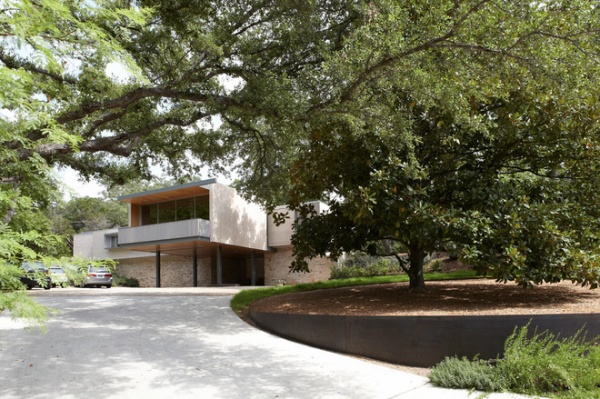
Botanical name: Magnolia grandiflora
Common names: Southern magnolia, evergreen magnolia
Origin and range: Native to the southeastern United States; its native range extends throughout the Carolinas, Georgia, northern and central Florida, Alabama, Louisiana, Mississippi and into eastern coastal Texas
Where it will grow: Hardy to 5 degrees Fahrenheit (USDA zones 7 to 9 in the Southeast, and to zone 10 on the West Coast; it’s also possible to grow it in zone 6 as long as it’s protected from winter winds; find your zone)
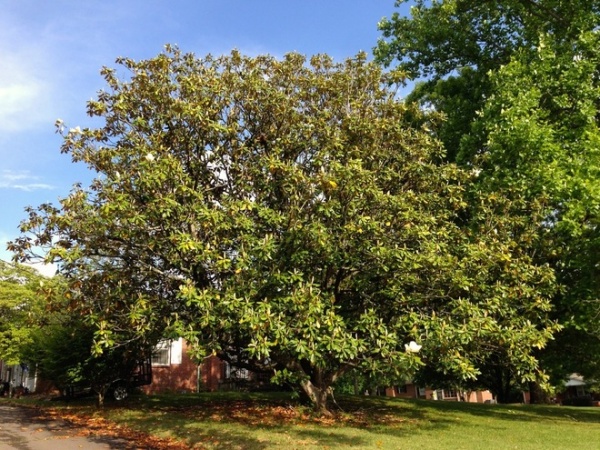
Water requirement: Medium in its native humid climate, where there’s at least 40 inches of annual rainfall
Light requirement: In the seedling stage, southern magnolia can withstand some shade; as it matures it requires full sun to flower and grow to its full, mature height.
Soil requirement: Loves a rich, acidic soil in an alluvial plain or silty soil with a high organic content; prefers moist but not wet soil that is well draining; will not survive in soggy, inundated soil
Mature size: 60 to 80 feet tall and 30 to 50 feet wide; slow to moderate growth rate
Benefits and tolerances: Tolerates acidic soil and very sandy soil; wind
Photo by Flickr user vhines200
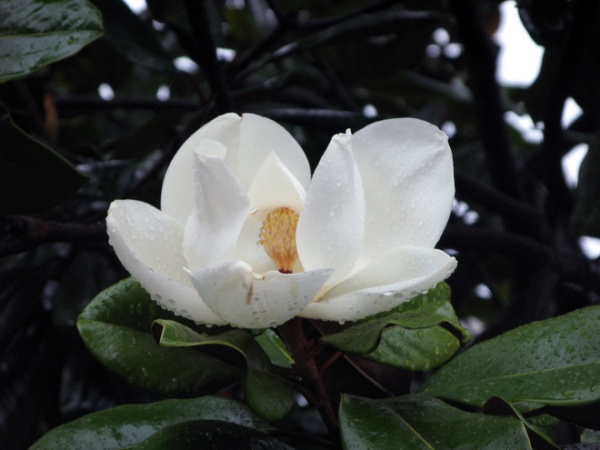
Seasonal interest: Its flowers will fill the air of your whole neighborhood with a sweet smell in late spring to early summer; the blossoms can be 8 to 12 inches wide, and their creamy whiteness gives off a moon-like glow at dusk; in autumn the seed heads are tan and cone-like, with bright red, shiny seeds.
When to plant: Container-grown magnolias, especially the dwarf cultivars, can be planted year-round, because they are less likely to experience transplant shock; if you are planting a field-grown tree, planting in autumn will give the tree time to establish new roots before the spring bloom and summer growing season. (Note that younger trees will not bloom for a few years, but the ‘Little Gem’ cultivar has been developed to bloom in the first year of planting.)
Photo by Ruth Hartnup
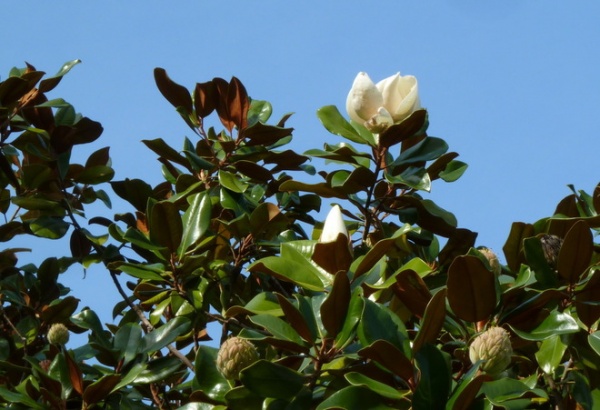
Distinguishing traits. There are many ornamental qualities that set southern magnolia apart from other large shade trees: large and fragrant flowers, unique seed heads and an overall pyramidal form. The leaves, however, may stand out most for year-round interest. At 5 to 10 inches long, the leaves are smooth and thick, with a slight covering of reddish-brown hairs on the underside.
Magnolias are called the ancient genus by botanists, because they emerged in the natural world prior to bees. It’s theorized that the flowers developed to be pollinated by beetles, and that accounts for their stiff, sturdy carpels.
Photo by Wendy Cutler
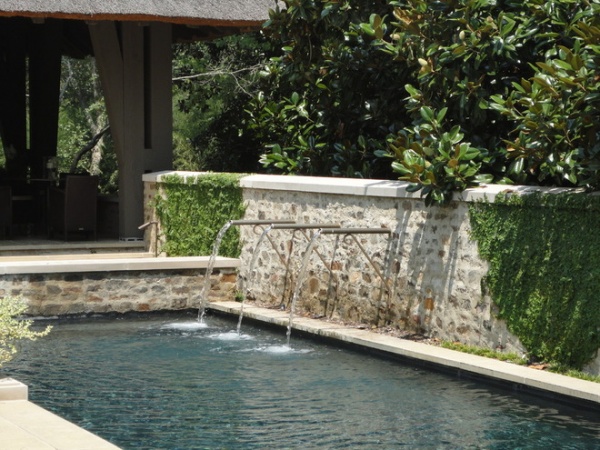
How to use it. The straight species of Magnolia grandiflora is most often planted as a single specimen tree where it can grow and spread to its mature height. However, there are many garden cultivars of the native species that have been bred to be more compact and can thrive in smaller spaces.
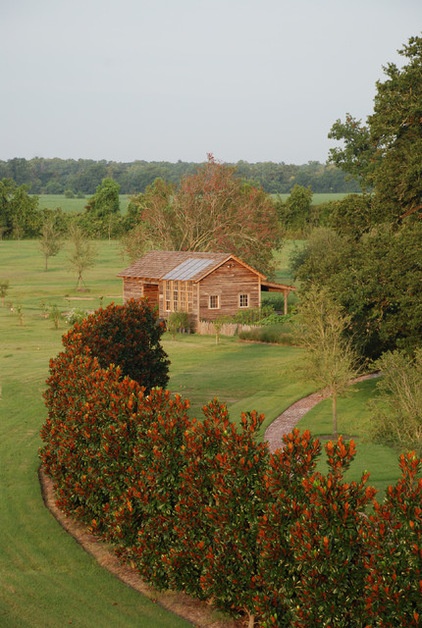
As an evergreen with large leaves, it makes a fabulous screen along a property line or a formal southern hedge in a large landscape. Pictured here is a curved row of southern magnolia (likely an upright cultivar) that defines a home and garden space within an expansive landscape.
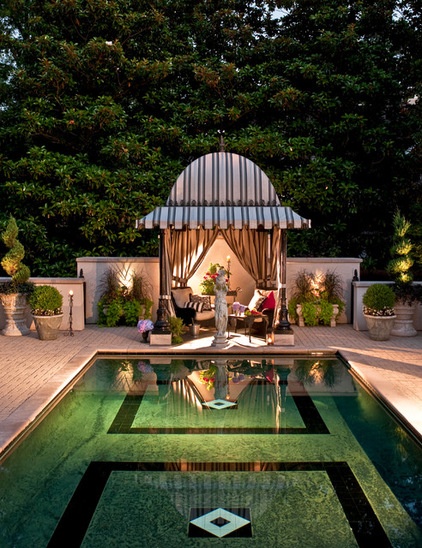
Shown here is a lustrous large screen of southern magnolia as the backdrop to a pool area. Selecting the right cultivar depends on where and how you want to grow it. Some of the best-performing cultivars include:
‘Little Gem’: a dwarf variety that’s excellent for screens and hedges, with smaller flowers (averaging 4 inches across) that reportedly bloom until October in parts of Georgia. Other compact forms include ‘Alta’ and ‘Kay Parris’. ‘Brackens Brown Beauty’: a cultivar that’s cold-hardy to zone 6, one of the oldest cultivars of southern magnolia. It has rich dark green leaf tops with brown undersides and grows 30 to 50 feet tall and 15 to 30 feet wide — not as large as the straight species but still a significant shade tree.
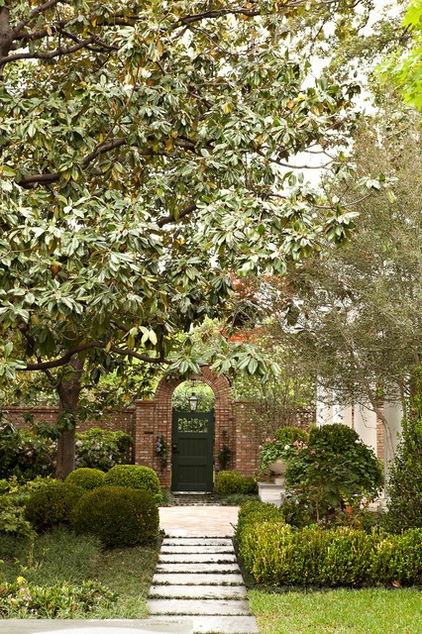
Planting notes. Magnolias can be messy trees. They shed their big leaves and seeds, which can make a lawn look untidy. Magnolias can be susceptible to wood decay if soil or mulch is piled around the trunk. Keep the base of the trunk clear and avoid any injuries to the trunk. Pruning is not required.
More:
8 Reasons to Plant a Great Tree
6 Trees You’ll Fall For
Related Articles Recommended












